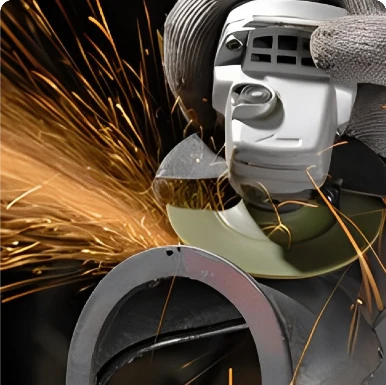
-
 Afrikaans
Afrikaans -
 Arabic
Arabic -
 Belarusian
Belarusian -
 Bengali
Bengali -
 Bulgarian
Bulgarian -
 Croatian
Croatian -
 Czech
Czech -
 Danish
Danish -
 Dutch
Dutch -
 English
English -
 Finnish
Finnish -
 French
French -
 German
German -
 Greek
Greek -
 hawaiian
hawaiian -
 Hebrew
Hebrew -
 Hindi
Hindi -
 Hungarian
Hungarian -
 Indonesian
Indonesian -
 irish
irish -
 Italian
Italian -
 Japanese
Japanese -
 Javanese
Javanese -
 kazakh
kazakh -
 Khmer
Khmer -
 Korean
Korean -
 Kyrgyz
Kyrgyz -
 Lao
Lao -
 Latin
Latin -
 Luxembourgish
Luxembourgish -
 Malay
Malay -
 Myanmar
Myanmar -
 Norwegian
Norwegian -
 Persian
Persian -
 Polish
Polish -
 Portuguese
Portuguese -
 Romanian
Romanian -
 Russian
Russian -
 Serbian
Serbian -
 Slovak
Slovak -
 Somali
Somali -
 Spanish
Spanish -
 Swedish
Swedish -
 Tagalog
Tagalog -
 Thai
Thai -
 Turkish
Turkish -
 Turkmen
Turkmen -
 Ukrainian
Ukrainian -
 Uighur
Uighur -
 Vietnamese
Vietnamese
stu . 12, 2024 06:16 Back to list
mountain bike categories
Understanding Mountain Bike Categories A Comprehensive Guide
Mountain biking is an exhilarating sport that allows riders to traverse varied terrain, explore the great outdoors, and experience the thrill of adventure. However, with the increasing popularity of mountain biking, the industry has developed an array of bike categories tailored to different riding styles, preferences, and environments. In this article, we will delve into the primary categories of mountain bikes, helping you choose the right one for your biking adventures.
1. Cross Country (XC) Bikes
Cross country bikes are designed for speed and efficiency on relatively smooth and well-maintained trails. They are lightweight, typically featuring a hardtail frame (which means they have a front suspension but no rear suspension) that enhances pedaling efficiency. XC bikes usually have a more aggressive riding position to promote speed. Ideal for racing and long-distance rides, these bikes excel on climbs and are often the choice for competitive riders. However, they may not perform as well on rugged terrains compared to other categories.
2. Trail Bikes
Trail bikes are versatile and well-rounded, suitable for various terrains and riding styles. These bikes incorporate both front and rear suspension, providing better shock absorption on uneven trails. The geometry of trail bikes strikes a balance between comfort and performance, making them suitable for climbs and descents alike. They often come equipped with wider tires and more robust frames, allowing riders to navigate technical sections and rough terrain with confidence. Trail bikes are perfect for recreational riders and weekend warriors who want an all-around machine.
As the name suggests, all-mountain bikes are built to handle a wide range of trail conditions, including steep climbs and aggressive descents. They offer more suspension travel than trail bikes, usually in the range of 130mm to 170mm, making them capable of tackling challenging downhill sections and rugged landscapes. All-mountain bikes feature a more relaxed geometry, which aids in stability during descents while still allowing for decent climbing capabilities. These bikes cater to riders who seek adventure and exploration, often venturing into more challenging terrains.
mountain bike categories

4. Enduro Bikes
Enduro bikes are designed specifically for enduro racing, which combines the aspects of downhill riding with an uphill challenge. They typically have longer suspension travel (around 150mm to 180mm) and a more aggressive geometry, making them ideal for tackling steep and technical descents. Enduro bikes are built to be robust and durable, as they endure the stresses of rough terrain. Despite their emphasis on downhill performance, these bikes are still relatively efficient for climbing, as riders often need to pedal uphill to reach the start of a timed downhill stage.
5. Downhill Bikes
Downhill bikes are engineered for the sole purpose of descending at high speeds on steep and technical tracks. They feature the most suspension travel of any mountain bike category, usually ranging from 180mm to 250mm, to absorb the impact of rough terrain. These bikes have a reinforced frame to withstand crashes and harsh conditions. As a result of their specialized design, downhill bikes are heavier and less efficient for climbing, making them unsuitable for flat or uphill trails. Riders typically use lifts or shuttles to access downhill trails.
6. Fat Bikes
Fat bikes are distinguished by their oversized tires, which can be 3.8 inches wide or more. These bikes are designed to traverse soft terrains such as sand, snow, and mud, offering exceptional traction and stability. Fat bikes have a lower pressure capacity in their tires, allowing them to float over soft surfaces rather than sinking in. Although they have a unique niche, they are increasingly popular among adventure seekers looking to explore diverse environments year-round.
Conclusion
Choosing the right mountain bike requires understanding the specific demands of your riding style and the terrains you plan to tackle. From the lightweight efficiency of cross country bikes to the rugged durability of downhill bikes, each category serves a unique purpose in the world of mountain biking. Assessing your preferences and objectives will help you select a mountain bike that perfectly fits your adventurous spirit, enhancing your riding experience as you explore the beautiful trails nature has to offer.
-
Premium Titanium Road Bike: Lightweight & Durable
NewsAug.01,2025
-
Red Black BMX Bike with GPT-4-Turbo AI Tech
NewsJul.31,2025
-
New Red Anti-theft E-Bike | Easy Ride City Commuter
NewsJul.31,2025
-
BMX 20 Inch Bikes for Freestyle & Street | Fat Tire Options Available
NewsJul.30,2025
-
322 High Quality 26 Inch 21 Speed Adult Mountain Bike OEM MTB
NewsJul.29,2025
-
Specialized Kids Mountain Bikes - Safe, Durable & Fun Riding Experience
NewsJul.29,2025

